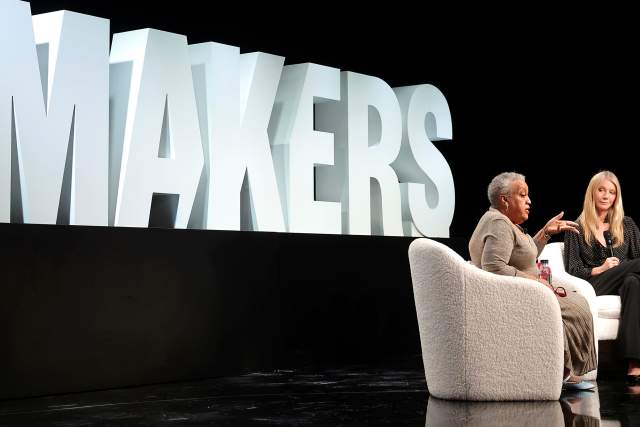Business leaders today are juggling more than ever, from creating diversity, equity and inclusion (DEI) programs to managing conflict in highly-charged environments. The brunt of the pandemic may be behind us, but its effects continue to ripple deep throughout today’s workplace.
Even before the death of George Floyd and the start of the Black Lives Matter movement became catalysts for change, business executives were starting to recognize the case for DEI. Companies are now creating and implementing their own DEI programs with the hope of creating welcoming and safe workplaces that improve advancement for all.
Against this backdrop, it seems that conflict and uncertainty are everywhere, from the front pages of the newspaper to our social media feeds. Now more than ever, executives need to know how to have productive conversations when a situation calls for sensitivity. They must negotiate in a charged environment, deliver clear messages that will get the desired result, and embrace change instead of fight it.
With the help of Tuck’s Organizational Behavior professors, we offer guidance on how business leaders can make strides toward equality and work more effectively. Read on to learn more as they share stories from the front lines and offer practical guidance rooted in their award-winning research spanning negotiations, gender and ethnic diversity, conflict management, decision making, hiring, mentoring, and much more.
Jump to: Pino Audia, Tianna Barnes, Stacy Blake‑Beard, Dan Feiler, Sonya Mishra, Adam Kleinbaum, Aram Donigian T’08, Julia Melin
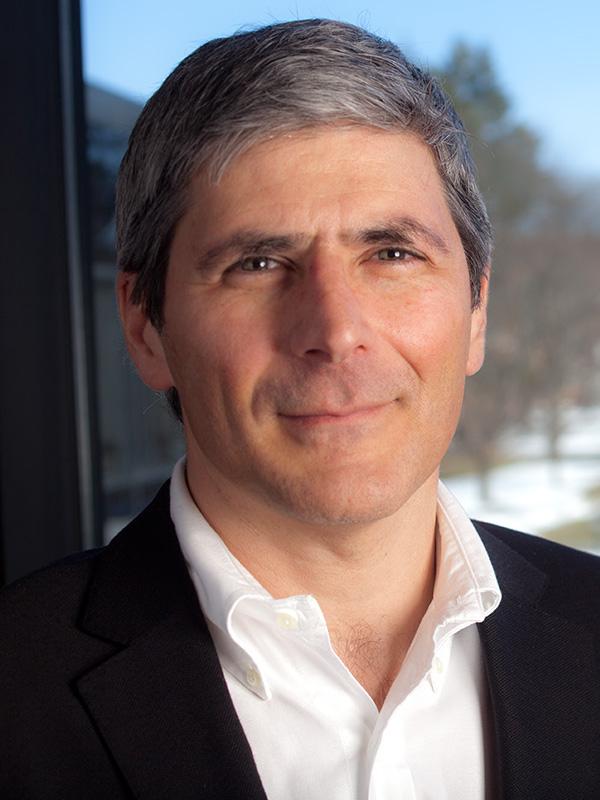
Pino G. Audia
Professor of Management and Organizations and Chair of Tuck’s Organizational Behavior Group
In business, clarity is the key to success.
Failure should encourage companies to learn from their missteps and welcome new approaches. So why isn’t that always the case?
“Self-enhancement is one explanation,” says professor Pino Audia. “Self enhancement is often known as looking at things through rose-colored glasses. When things are unclear, what do we focus our attention on? What kind of story do we construct? Self-enhancement research says that people tend to focus on the positive. This is a good thing for the most part because it has allowed humans to deal with adversity and show resilience. The effect of self enhancement I’ve studied is that, when we fail and the failure is not 100% clear cut, we don’t see it as a failure. So, because people at the top are using their ability to integrate events in ways that are biased, they don’t see their actions as a failure and they won’t make a change.”
The nature of failure and its application to decision-making has intrigued Audia from the start of his career. A native of southern Italy, Audia was inspired by professors he met along the way who became his mentors, including Ed Locke, the father of goal setting. “My experience is that the people you end up meeting in your journey can have a big influence on you,” he says. Audia doesn’t go back to visit southern Italy as much as he’d like, but he stays in touch with his roots on an almost daily basis through regional ingredients he uses when he cooks.
“When things are unclear, what do we focus our attention on? What kind of story do we construct? Self-enhancement research says that people tend to focus on the positive. This is a good thing for the most part because it has allowed humans to deal with adversity and show resilience.”
Throughout his career, Audia has penned numerous award- winning articles on self-enhancement and the psychology of decision- making as well as a book on the topic. His research finds that people usually give a self-enhanced assessment of their performance when performance metrics are unclear. “Clarity is what removes ambiguity,” he says. “This is a topic that comes up in my Tuck Executive Education classes quite often. What I’ve learned is that sometimes executives refrain from being clear because they think that by being clear, they’re taking away autonomy from people, but providing clear instructions is very important.”
Interestingly, Audia finds that self-enhancement disappears when a situation is dire. This happens in sports all the time. “When a team is doing poorly on all dimensions, if the results don’t get better, it’s very hard to put a positive spin on it,” he says.
RESEARCH SNAPSHOT
Audia’s research has spanned topics that include how we learn from success and failure, how our routines and daily behavior are related to performance, and how decisions are made under ambiguity. “Right now I’m interested in connecting the topic of self-enhancement in decision making to research on diversity,” he says. “My latest research paper asks the question of whether people who belong to different social categories (e.g., gender, social class) respond differently to low performance under conditions of ambiguity.” In pursuing this work, Audia was guided by the realization that much of what is known about how decisions are made in organizations does not consider the different social groups to which the people who make decisions belong.
In addition to teaching leadership in several Tuck Executive Education programs, Audia teaches two MBA elective courses—Power and Influence and Leadership Development—and the Personal Leadership course in Dartmouth’s interdisciplinary Masters in Healthcare Delivery Science program.
HOW TO MINIMIZE AMBIGUITY
Be clear about what you expect. “Ambiguity sometimes is inevitable, but sometimes it is something that leaders can actually control,” Audia says. Lack of clarity happens for a variety of reasons, but Audia says the main one is a lack of time invested in preparing the appropriate message. “When we don’t prepare the message, we improvise, and the result could be a lack of clarity that may leave room to the person who’s reporting to the leader to form interpretations that are not conducive to good decisions and learning. Investing in preparing and giving specific expectations is a very important way to prevent self enhancement. Boards too would benefit from investing in setting clear expectations for chief executive officers.”
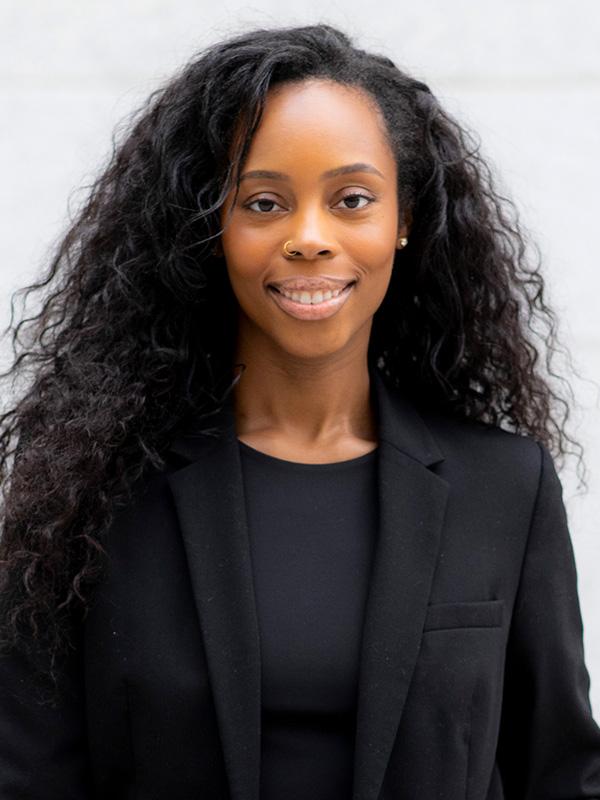
Tianna Barnes
Assistant Professor of Business Administration
Social identity and the newcomer experience at work.
The arrival to Tianna Barnes’ very first class in a business school would become a foundational experience to her research interests as an organizational psychologist.
Upon entering the large lecture hall of her first course at the Kenan Flagler Business School, this psychology undergraduate was met with the gaze of 100-plus business school students who were not only unfamiliar to her but distinctly demographically different.
“I scurried to the back and remained very quiet throughout the course,” Barnes says. “The students were fine and the content was interesting, but I simply wasn’t adjusting as I typically would. And ironically enough, I was sitting exactly where I needed to be to get a grasp around why.” Here, she developed an interest in studying the experiences of underrepresented newcomers. She says, “I credit much of my investment to research around representation, belonging, and diversity to that small but impactful first experience in a business school.”
“Workplace diversity trainings often get a bad rap and sometimes rightfully so. The content either doesn’t get across or doesn’t stick long-term. In this work, we try to identify means around those impediments. Part of what we do in this research is test a certain type of training that was developed in collaboration with organizational middle and senior managers focused on partner work, voice, anxiety, and allyship.”
The Carolina native from a tight-knit family went on to become the first Black woman to earn her doctorate in Business Administration from the Carlson School of Management at the University of Minnesota, defending her dissertation in Minneapolis just days after the murder of George Floyd.
This is Barnes’ first year in the Upper Valley, an environment she finds welcoming and friendly, not unlike her experiences living in the Midwest or those in Philadelphia where she was on faculty at The Wharton School prior to joining Tuck.
RESEARCH SNAPSHOT
Broadly, Barnes’ research explores how people navigate the many social identity groups they belong to. One of her papers in progress explores this question in the context of race-based diversity training in the workplace.
HOW TO MINIMIZE ANXIETY DURING DIVERSITY TRAINING
Don’t make diversity training a one-and-done experience. In their preliminary results on the diversity training, Barnes and her coauthors are finding that increasing identity responsiveness—helping a person feel seen, heard, and understood by another individual—can help mitigate anxiety during trainings. The authors allowed participants to “rapport-build’ before getting into talking about racism and other difficult topics. They also ensured that the training wasn’t a one-and-done experience; it took place over the course of several weeks, checking in along the way.
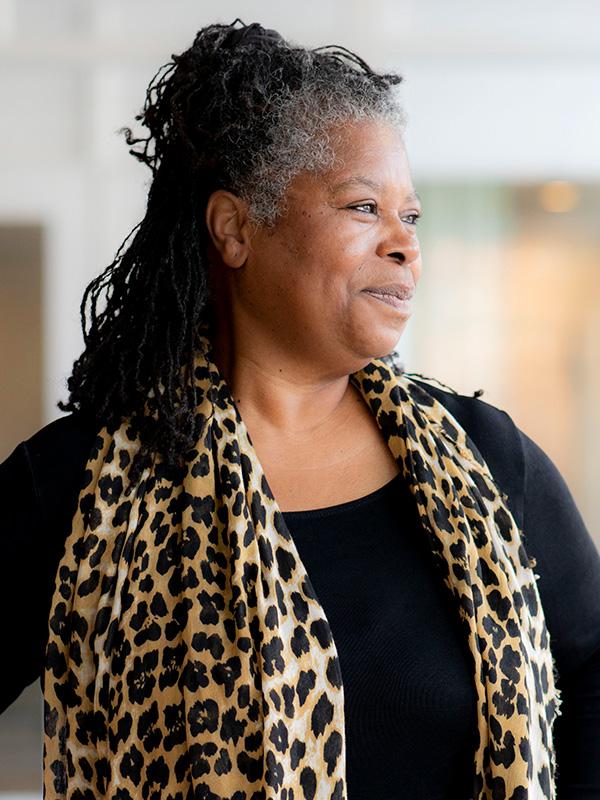
Stacy Blake-Beard
Clinical Professor of Business Administration
The impact of mentoring as a contribution to diversity, equity and inclusion (DEI) strategies.
Mentoring is a theme that runs deep throughout Stacy Blake-Beard’s academic career, from her time as a Fulbright scholar in India to her sprint course “Mentoring, Sponsorship and Other Developmental Relationships.” In the latter, she teaches students with the goal of “disrupting the narrow definition” with which mentoring is frequently associated.
“For me, an important aspect of the course is really laying out what we mean by mentoring because the word has a very generic term to it,” she says. “People typically see mentoring as a situation where an older, more senior person gives their blessing and support to somebody who is younger and more junior, but that's not all it is.”
Blake-Beard believes that formal mentoring is a crucial part of a well-planned DEI strategy. She says it has a “transformational” psychosocial component and involves different phases, where both parties learn and benefit. “There’s a reciprocity—both people are gaining something in the relationship,” she says.
Through her childhood, Blake-Beard was surrounded by doctors and lawyers, and intended to follow in those footsteps. But after taking courses in psychology, she realized that organizational behavior would be a better fit for her to be of service to others.
“I fell in love with organizational behavior as a psychology student at the University of Michigan when I saw that this field could be something that makes a difference for folks,” says Blake-Beard, a native of Baltimore and a self-described extrovert with an affinity for crab cakes.
“People typically see mentoring as a situation where an older, more senior person gives their blessing and support to somebody who is younger and more junior, but that's not all it is. There’s a reciprocity—both people are gaining something in the relationship.”
Blake-Beard and Professor Adam Kleinbaum teach the Managing Organizations course and also coauthored a case, with Mary Shapiro, on DEI initiatives used by leadership at the Federal Reserve Bank of San Francisco. One of the biggest benefits Blake-Beard believes that student gain is the opportunity to see a “real life example” of strategically applying DEI initiatives.
RESEARCH SNAPSHOT
In addition to penning numerous articles on mentoring and gender, Blake-Beard received a Fulbright Award to support her research on gender and mentoring, in partnership with the Center for Leadership, Innovation and Change (CLIC) at ISB. She describes her time there as an unforgettable professional and personal experience, one where she was able to learn from women leaders across the country along many industries and sectors. The international award provided Blake-Beard with an opportunity to extend the work that she has been doing in the U.S. Exploring how mentoring may show up in different cultural contexts was an invaluable experience.
HOW TO INCLUDE MENTORING AS PART OF A DEI STRATEGY
Think about five “P” words. Blake-Beard says she finds it informative to frame formal mentoring around five “P” words: purpose, participants, partnership, prioritization and preservation. “Keep in mind the reasons you’re implementing mentoring as a DEI initiative and make sure you invite people who will allow you to meet this purpose,” she says. Then, consider how you will match people together via partnerships (by gender or ethnicity, forexample), make sure it’s a priority for those involved, and think about how to preserve the relationship long after the mentoring program ends.
“We all have busy lives, and at some point, it is not uncommon for participants in mentoring arrangements to move apart from one another,” she says. But with formal mentoring initiatives, especially in the service of DEI, partners will have to determine whether they are going to move back towards one another and how that process will unfold. Mentoring relationships are invaluable resources, but they are not without effort. Anything worth having is.
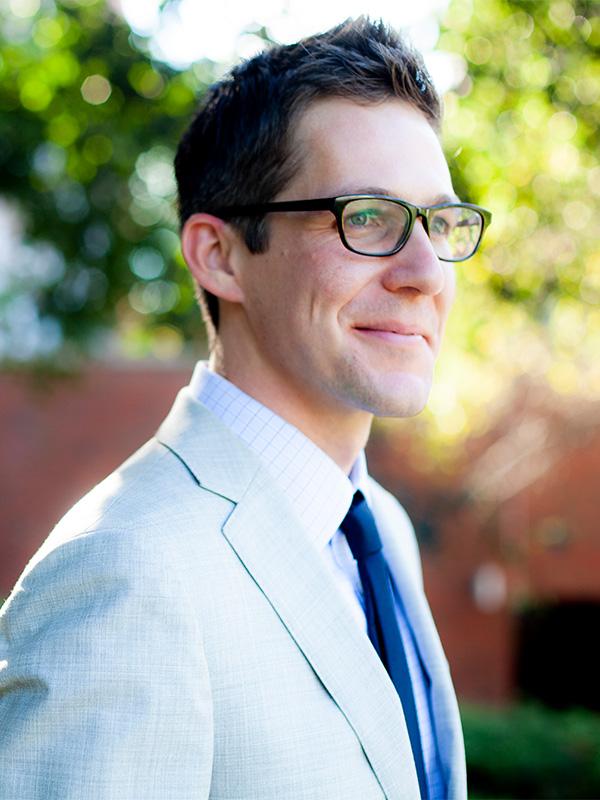
Dan Feiler
Associate Professor of Business Administration
In decision-making, “never accept easy answers.”
The thrill of new love may feel good, but it doesn’t lend itself to rational decision-making in business. It can lead to cycles of “chasing that shiny new thing that we continually fall in love with next,” says professor Dan Feiler.
This dynamic can affect hiring decisions. “Organizations often think—if we can hire that one specific or additional person, then it will solve all our problems—but it’s important to recognize that it will probably not be the silver bullet that we think it will be,” he says. “It’s not how we should think about improving work in a holistic sense, since it takes focus away from our processes and how we manage and develop the people we have.”
Feiler likes exploring the “gray area” of complicated issues and is deeply interested in the nuances of decision-making: our biased judgments and overinflated expectations. A productive researcher, he has penned numerous articles spanning these topics and teaches students in the classroom with the goal of getting students to “never accept easy answers.”
“If we like someone, we’ll pat them on the back for conviction, but if it’s someone we don’t like, we condemn them for it. We don’t have as good an understanding of the concept of conviction as we think we do or as we should.”
“My ideas really come from interacting with people,” he says. “I like to see how people learn from the experiences they’ve had, how they face uncertainty, how they interact with others, what conclusions they’ve come to and with what confidence.”
This past year, Feiler was named the faculty director of Tuck’s new Impact Academy, which offers executive education programs tailored to the U.S. Olympic and Paralympic Committee. He’s been creating a curriculum for the organization to help athletes and staff expand their professional networks and give them applicable skills for work and life, including board-readiness training. “One thing we are doing is giving athletes an educational and developmental boost so that they can serve on the boards of all the different associations, committees, and governing bodies associated with Team USA,” he says. “Active and effective athlete participation in those conversations is critically important.”
RESEARCH SNAPSHOT
Feiler has become increasingly interested in the concept of conviction, “a topic that is so important for driving change but can also lead to toxic closed-mindedness.”
“If we like someone, we’ll pat them on the back for conviction, but if it’s someone we don’t like, we condemn them for it. We don’t have as good an understanding of the concept of conviction as we think we do or as we should.”
HOW TO THINK ABOUT DATA IN DECISION-MAKING
Statistics and analytics can be fallible in some of the same ways as human psychology. “We think a lot about cognitive biases in decision-making, situation neglect, availability bias and confirmation bias, but we should also be really careful in how we think about analytics,” Feiler says.
“A lot of times, we want to rely on statistics and analytics as if they’re completely impartial and objective, and therefore think we can sort of blindly rely on them. And in some ways that’s not wrong. But you also have to account for situational factors that are hiding in those statistics—things that are having a less-obvious impact on behavior and performance but shouldn’t be attributed to the individual, both good and bad. That’s an example of how statistics, and the analytics using those statistics, may suffer from a ‘bias’ that we’d typically talk about with respect to human psychology.”
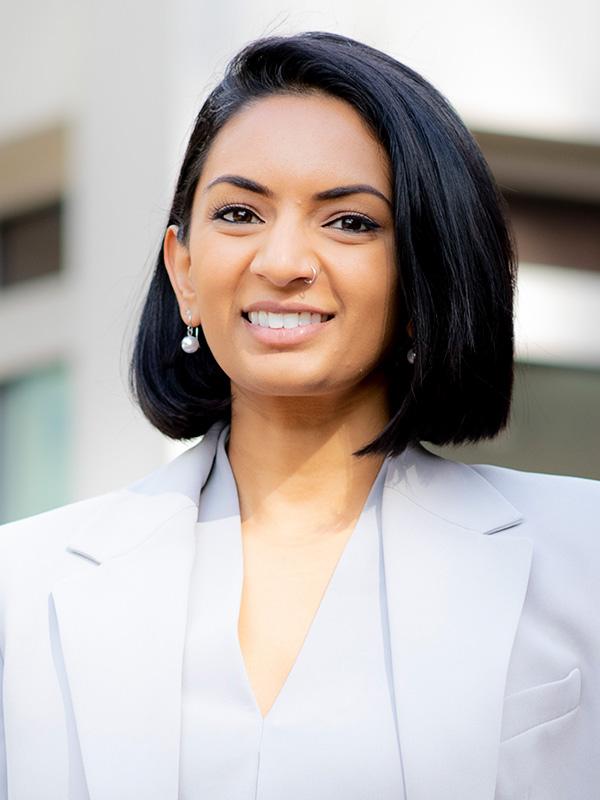
Sonya Mishra
Assistant Professor of Business Administration
A scientific approach to tackling workplace gender inequity.
Sonya Mishra, an assistant professor at Tuck, did not initially set out to become a professor. In fact, after college, Mishra worked as an investment banker in New York City. However, upon experiencing the many gender inequities which plague investment banking, such as pay and promotion disparities, Mishra decided to completely switch careers and became a professional dating coach, where she helped female executives navigate New York City’s complex dating scene. While Mishra loved this job, she quickly realized that her clients, who were leaders in their fields, actually faced many of the same issues that she had faced during her time on Wall Street.
“One night, I was out with a client who was a C-suite executive at a major financial institution,” Mishra recalled. “She told me about all the gender bias and discrimination she faced throughout her entire career. In talking to her, I realized that my negative experience in banking was not an isolated incident. This was a much, much bigger problem, and I wanted to get to the bottom of it.”
“I realized that my negative experience in banking was not an isolated incident. This was a much, much bigger problem, and I wanted to get to the bottom of it.”
Mishra went on to earn a doctorate in business administration from the UC Berkeley’s Haas School of Business, where her research focused on gender inequity in the workplace. She began teaching at Tuck this year, where she developed an elective titled Leading Diverse Organizations. Mishra’s course is based in quantitative research, as she teaches key concepts using statistics, data, graphs, and huge sample sizes—“in a way that’s extremely rigorous,” she says.
Although Mishra has lived in major cities throughout most of her life, she enjoys the many outdoor activities available in the Upper Valley. Mishra’s love of the outdoors is apparent from her many travel stories. She’s backpacked through over 50 countries, having had adventures such as motorbiking across Vietnam, camping in the deserts of Egypt, scuba-diving in Indonesia, and trekking to Everest Base Camp.
RESEARCH SNAPSHOT
Mishra’s research interests include gender stereotypes, hierarchy, and masculinity. She’s examined how women who desire status (i.e., respect) versus power (i.e., control) are less likely to incur backlash, how stereotypes and evaluations of women change as they age, and how men’s insecurities around their masculinity influence their reactions to being flirted with at work.
She and her colleagues recently submitted a paper for publication, the idea for which was sparked by a disparity she noticed while looking through Forbes’ list of powerful people. While the men on this list consisted of CEOs and world leaders, such as Jeff Bezos and Vladimir Putin, the women who made the list were celebrities that included Rihanna and Taylor Swift. She began to wonder: “Is society more comfortable with women who have high status (i.e., they are respected in the eyes of others) but not women who have a more raw form of power? When we confer status to women, it doesn’t involve taking anything away from men. However, power in the form of control is zero-sum. There can’t be two CEOs of a company or two prime ministers of a country. Giving women this
raw form of power involves taking something away from men.”
HOW TO IMPROVE WORKPLACE EQUALITY
Dismantle the “masculine default.” It isn’t easy for women to succeed in workplaces where men are treated as the “default” employee. For instance, some workplaces inherently value traits such as overconfidence, risk-seeking, and competition—these are actually just masculine stereotypes, so it’s easier for people to view men as embodying these traits compared to women. Masculine defaults also appear in social practices (e.g., company outings at baseball games), organizational policies (e.g., requiring employees to nominate themselves for promotion, even though research finds that women self-nominate less due to fears of backlash), and even office décor (e.g., walls lined with photos of male leaders reduce female employees’ sense of belonging). “Masculine defaults are these sneaky, insidious forms of bias because they’re harder to pin down, and they make it much harder for women to succeed in those workplaces,” she says.
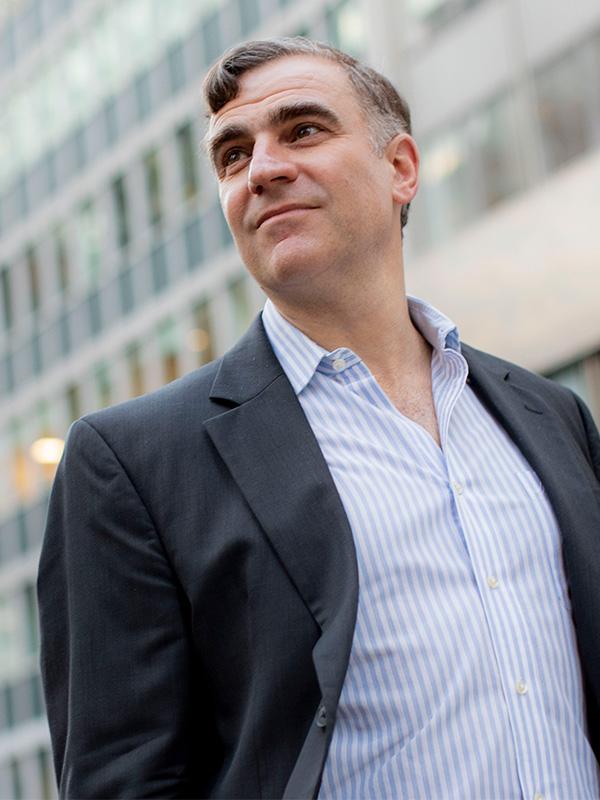
Adam M. Kleinbaum
Associate Professor of Business Administration
Diversity, equity, and inclusion plans must be holistic to be successful.
Not long after professor Adam Kleinbaum began teaching a refreshed version of Managing Organizations as the pandemic began in spring 2020, the world changed. The murder of George Floyd and the inauguration of the Black Lives Matter movement got Kleinbaum thinking about the most effective ways to teach diversity and inequality in the classroom.
“The events prompted me to reflect on my own teaching, as well as on the curriculum at Tuck,” says Kleinbaum, who partnered with professor Stacy Blake-Beard on a subsequent redesign of Managing Organizations. The goal? Ensure that diversity and inclusion would be central themes running throughout the entire course. “Along the way, we realized that it would be useful to have a capstone case that brings together a variety of themes from the course and focuses more explicitly on diversity and inclusion.”
Kleinbaum and Blake-Beard decided to interview leaders at the Federal Reserve Bank of San Francisco and author a case study about the SF Fed’s plan to build a diverse, equitable and inclusive workplace. Although they chronicled the organization’s efforts over a two-year period, Kleinbaum says the Fed’s work is ongoing. “There really isn’t an end to the project because organizations are constantly evolving,” he says.
“There’s mounting evidence that having diversity in your network is a really important way to avoid falling prey to problems of echo chambers, which create a situation where you have limited access to the range of information that’s out there and end up hearing only views that reinforce your own views.”
There were many takeaways from the case study but one in particular continues to resonate: To be successful, DEI needs to pervade the entire organization. “When you tack DEI onto the side of an organization by adding a policy that just acts as a Band-Aid to the problem, you really don’t address the problem,” he says.
RESEARCH SNAPSHOT
For nearly two decades, Kleinbaum has studied humans’ social networks, penning award-winning research along the way that’s been widely featured in the media. In addition to his work on diversity, equity, and inclusion, he’s used neuroscience to examine the role that conversation plays in helping groups reach consensus and has also studied how our social networks can give rise to echo chambers that limit our access to diverse information and perspectives.
“There’s mounting evidence that having diversity in your network is a really important way to avoid falling prey to problems of echo chambers, which create a situation where you have limited access to the range of information that’s out there and end up hearing only views that reinforce your own views,” he says. “And I think these are significant risks both in the political domain and in the business domain.”
Kleinbaum teaches an elective seminar on social networks, along with the core MBA course Managing Organizations, an organizational behavior class in the Thayer School of Engineering, and a leading change course in Dartmouth’s interdisciplinary Masters in Healthcare Delivery Science program.
HOW TO DESIGN A DEI PROGRAM
Make it holistic. Reflecting on learnings from the SF Fed, Kleinbaum says: “I think the thing that was most striking to us about what the Fed did—and that we really focus on in the case and we really want students to take from it—is that the way the Fed goes about approaching diversity and inclusion is holistic. It doesn't add a program here or a new policy there while leaving everything else unchanged. They really thought about all aspects of the organization.”
For instance, the organization didn’t solely delegate DEI to HR. They embedded it in their overall strategy so that it touched other important facets of the organization, such as leadership and culture.
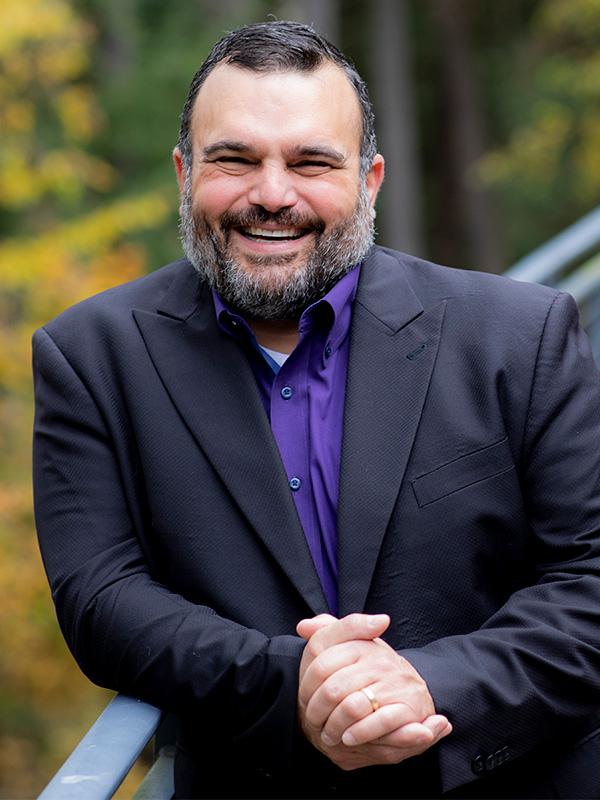
Aram Donigian T’08
Clinical Professor of Business Administration, Lieutenant Colonel (U.s. Army, Retired)
Getting a better “yes” in a negotiation.
When professor Aram Donigian isn’t teaching Negotiations, working with Tuck’s Business Bridge Program, or skiing with his wife and six children, he’s recording new episodes of his podcast NEGOTIATEX.
The show has featured former Scotland Yard and FBI negotiators, a resilience trainer for the U.S. Army, the Toronto Blue Jays’ President/CEO, and many academics and practitioners.
“Recently, a guest discussed how parents can help kids manage strong emotions and feelings, key components to any conflict,” he says. “We take a broad view of negotiation.”
Topics span situations Donigian has encountered over a career as a negotiator in the military and corporate world: high stakes, cross cultural, and multiparty.
“During a negotiation, be just as inquisitive as you are about advocating for yourself. It’s easy to go straight to advocacy, and we need to balance that with asking questions and really listening to the other person.”
A Tuck alumnus and senior trainer for Boston-based Vantage Partners, Donigian has taught at Tuck since 2019. He served in the U.S. Army for 21 years as an infantry and public-affairs officer, deploying three times to Afghanistan.
Along with Jeff Weiss, a Dartmouth alumnus and former Tuck faculty member, Donigian cofounded the West Point Negotiation Project in 2009, training military leaders to negotiate amid complex, challenging situations and emanated from the duo’s experience teaching West Point’s negotiation course.
Donigian, a “farm kid” from Elgin, Oregon, traces his military interest to his childhood. “My parents are originally from New Hampshire, so we would come visit relatives,” says Donigian, whose grandfather served in World War II in the Navy. “We’d tour Lexington and Concord, or walk Boston’s Freedom Trail. I’ve long had a desire to serve something bigger than myself, and my folks encouraged that.”
RESEARCH SNAPSHOT
Donigian is looking to draft new case studies in healthcare and energy, collaborating with fellows from the Revers Center for Energy, Sustainability and Innovation. He’s also developing a final capstone simulation that would involve alums roleplaying scenarios with students.
He’s coauthored several articles on military negotiations. In negotiation, when there’s intense pressure to make quick progress and use force rather than collaboration, “it’s then that we have our greatest need to step back, consider our choices, manage the process, and act purposefully. Those steps are critical, regardless of sector, industry, or business.”
HOW TO NEGOTIATE
Be curious. “During a negotiation, be just as inquisitive as you are about advocating for yourself,” Donigian says. “It’s easy to go straight to advocacy, and we need to balance that with asking questions and really listening to the other person.”
Get creative. “Rather than focusing on a single term or offer, engage your counterpart in joint brainstorming and consider the full range of options,” suggests Donigian. “The optimal solution to challenging problems is usually something we discover together.”
Think long-term. It’s important to consider the nature of your relationship not just now but over time. What will the partnership look like tomorrow and down the road? “Ensure that how you negotiate lays the foundation to successfully operate and execute with your partner long after the deal is signed.”
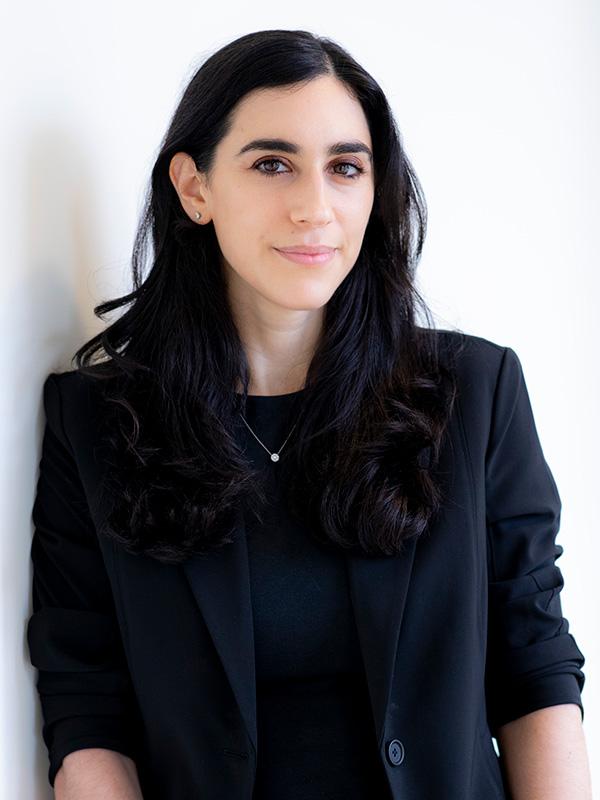
Julia L. Melin
Assistant Professor of Business Administration
Testing real-world interventions to improve women’s organizational advancement.
Julia Melin’s interest in gender and organizational behavior developed early in her career while working at an investment bank in New York City. She observed firsthand how a company’s formal and informal practices can contribute to gender inequality. These behaviors, both subtle and overt, included managers failing to correct for pay disparities between men and women who held the same positions, promoting high-performing male colleagues who publicly engaged in workplace harassment, and discouraging men from using their paid parental leave. It was not until she changed careers, however, and began working as a career consultant for a tech recruiting startup that she realized how these organizational challenges extended well beyond the financial sector.
“I worked for a recruiting platform that essentially played match-maker between job candidates and companies. In my role, I observed how recruiters and hiring managers engaged in different tactics to recruit women and men engineers,” she says. “In one specific instance, there was a company that was simultaneously trying to recruit a man and woman developer for the same position. Both candidates were at the same level, but when they got to the offer stage, the company offered the man a significantly higher salary and equity package than the woman, and also offered to fly him out to the festival South by Southwest that week to hang out with the team to convince him to join. My antenna went up, and I said to myself, ‘What is going on?’”
“Having that sense of neutrality is critical for creating a sense of psychological safety.”
When the platform’s internal data showed than women were systematically offered $10,000 less in average compensation than men for the same position, company leaders responded by piloting small-scale interventions to mitigate the problem. It was then that Melin realized the power of data for not only identifying gender inequities, but also testing potential solutions.
RESEARCH SNAPSHOT
In her research, Melin uses mixed-methods, online experiments, and large-scale digital interventions in real-world settings (e.g., Fortune 500 companies and online career training platforms) to examine how cultural beliefs about gender influence organizational practices, including hiring and talent assessment. She also studies how organizational practices can be designed to reduce gender inequality and improve women’s organizational advancement.
In one recent publication, she and a coauthor evaluated the effects of a six-month online intervention fielded with early-career women at a North American biotech company. The intervention, consisting of peer cohorts and one-on-one coaching from external mentors, aimed to develop participants’ soft skills—interpersonal abilities such as negotiation, influencing coworkers, and strategic networking. The study began immediately before COVID-related lockdowns, allowing the researchers to measure how employees’ soft skills were affected by the pandemic, and whether the intervention would buffer against any negative effects.
Melin and her coauthor found that those who had been in the intervention rated their own soft skills significantly higher after participating in the program, while a control group of women nonparticipants experienced a significant decline over the same period. They also found that women who completed the online program received better performance ratings than their non-participant counterparts, and that overall, people who gave themselves higher soft skill ratings were more likely to be at the company one year later.
HOW TO IMPLEMENT COHORT-BASED PROGRAMS
It helps to use mentors outside of your organization. In Melin’s research, one crucial aspect of implementation was that the all-women cohorts were at similar career stages and received coaching from senior women mentors outside of the organization. “I think the women felt comfortable confiding throughout the program since neither their cohorts nor their coaches would be involved in any individual woman’s promotion process or in contact with her manager. Having that sense of neutrality is critical for creating a sense of psychological safety.”
